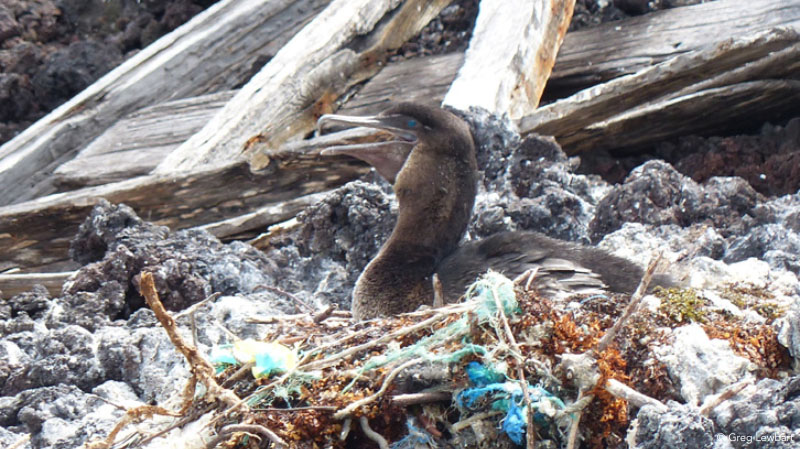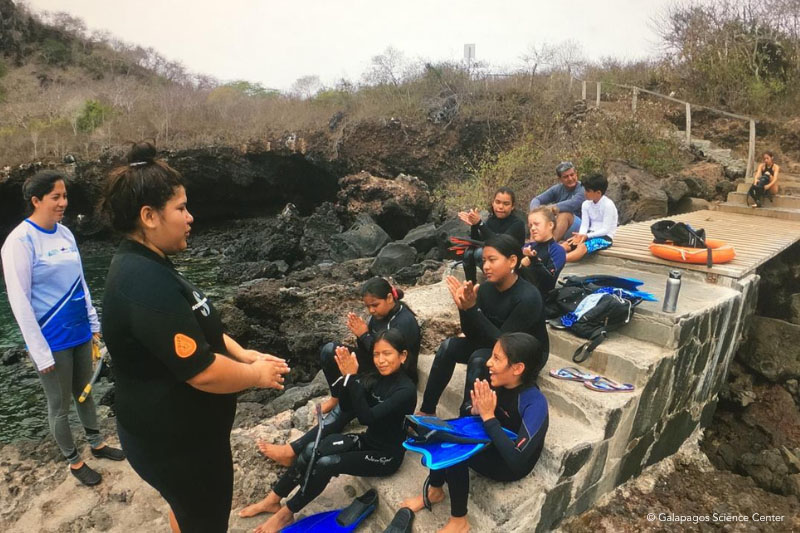Marine ecosystems are being destroyed by plastic pollution
The Galapagos Archipelago is one of the cleanest ecosystems on the planet, but it's not exempt from the damaging effects of plastic. Galapagos National Park rangers remove more than 8 tonnes of plastic from the beaches each year. And this is only the tip of iceberg. More than 40 species have been discovered to be caught in plastic on the Galapagos Islands, either living in habitats affected by plastic or ingesting plastic when they mistook it for food. Plastics have been found in the stomachs of seabirds with their young, as well as abandoned fishing equipment.
GCT, with the help of generous supporters such as you has funded a variety of tools that help monitor and reduce plastic pollution on Galapagos. The use of drones is one way to determine where the plastic accumulation along Galapagos' coastlines occurs. Another method involves using oceanographic modeling to pinpoint plastic sources and their movement on ocean currents.
The first Global Plastics Treaty will be signed by world leaders in 2024. It is therefore vital to increase our research on the impact of plastic pollution on Galapagos marine life and to present the findings to the international stage to catalyse action.

From mangrove nurserys to the ocean, sharks require more protection throughout their entire life cycle.
In the Galapagos waters, sharks are intentionally targeted and harvested to satisfy the Asian demand for shark-fin soup. They are also accidentally caught by boats fishing for tuna. Galapagos Marine Reserve, one of only a few places in the world where you can see scalloped-hammerheads swimming together, is a priority for conservation. This species, which is critically endangered, is gathered by large groups of sharks, sometimes up to hundreds. Mangrove habitats for hammerheads are vital, and we are working with local scientists at the Galapagos Science Center on ways to protect them from tourism and fishing.

...to the open oceans
GCT-funded research has led to better protections of species like rays, sharks and turtles. But we must continue to demonstrate the importance of marine reserves and convince Ecuador to safeguard 30% of its oceans before 2030. As migratory species, hammerheads, whale sharks, etc., are vulnerable to the fishing industry once they have left the marine reserve protection. We must continue to track migratory animals and study their health in order to protect the oceans.

Supporting future ocean protection
Local shark researchers, Dr Diana Pazmino & Sofia Green are passionate about inspiring the next generation to be ocean conservationists. We aim to work together to help a local branch of the "Gills Club" (an ocean conservancy group for girls between 9-13 years old) to educate local girls on ocean conservation, and connect them to inspiring local women scientists.
